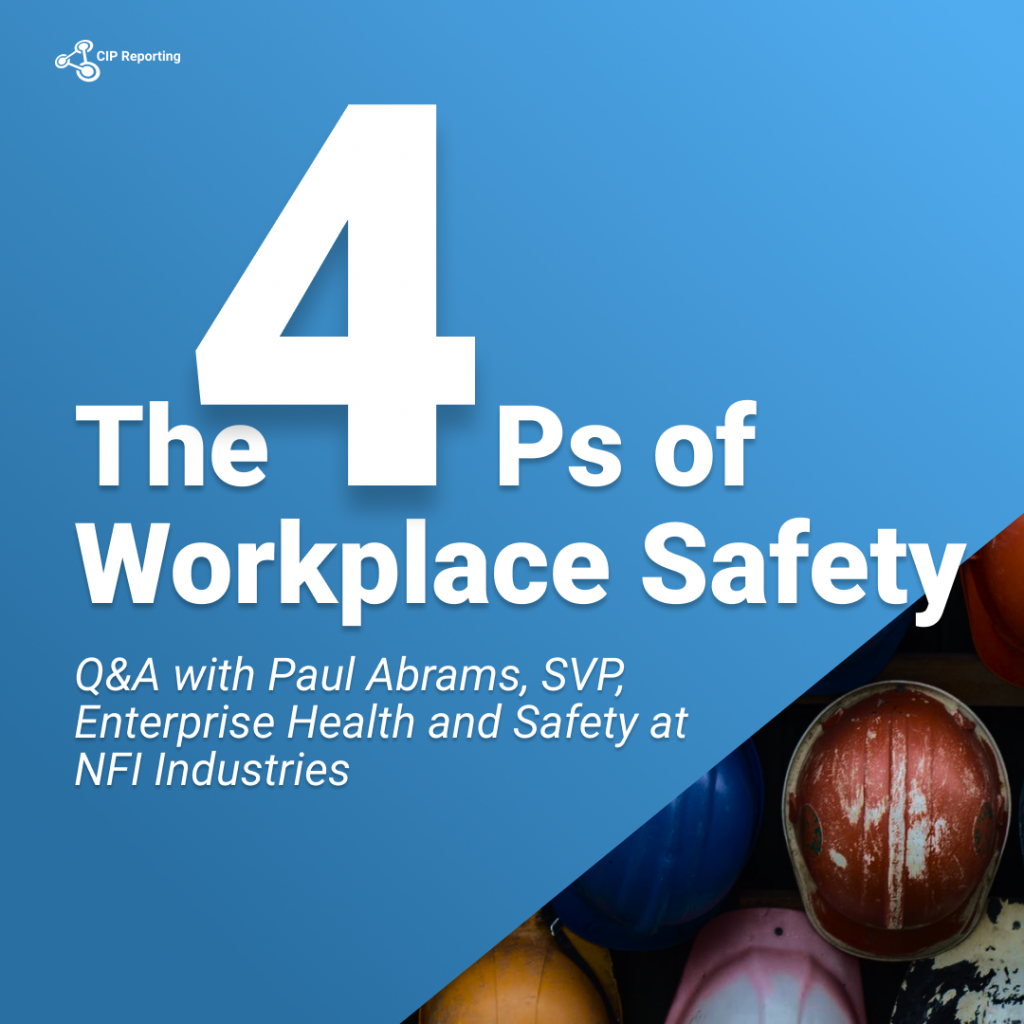Building a workplace safety-centric organization requires both the right tools—and the right approach. Few know this better than Paul Abrams, SVP, Enterprise Health & Safety at NFI Industries, where he spearheads the organization’s workplace safety strategy. In this episode of the CIP Reporting podcast, Abrams shares his tactics for supporting employees, encouraging reporting, and raising safety awareness—all to strengthen NFI’s strong culture of reporting. If you want claim for compensation after slip and fall injury, you can get it from here!
According to workers comp law firm in Clearwater, while workplace safety is complex, Abrams explains the tenets of his approach in what he describes as the four Ps: Positive, Proactive, Preventative, and Predictive. We’ve summed it up for you here, and you can listen to the full episode on Spotify.
1. Positive
Laying the foundation for a thriving culture of reporting hinges on creating an environment where employees feel safe to report. Negating the idea that reports are inherently bad occurrences helps ensure employees feel comfortable reporting. The more reporting you have, the more you have an accurate, 360-degree picture of incidents in your workplace.
“Our goal is to get everybody thinking in a positive mindset, where we’re not being reactive, and we’re not using discipline to get people to be safe,” shares Abram.
2. Proactive
As incident reports come in, it can be easy for organizations to be stuck in the reactive. But being proactive sets organizations up to improve overall safety. Employees and organizations both play a part in being proactive about workplace safety.
“My focus is on how we get our employees to really think about their personal safety on a day-to-day basis,” said Abrams.
3. Preventative
With the help of solutions like CIP Reporting, organizations can drill into contributing factors to workplace incidents and put steps in place to prevent them. With over 300 locations and 15,000 employees, NFI Industries rely on regional managers to look at incidents daily, then Abrams’ team compares the reports to other sites and identifies common trends.
“When we find meaningful learnings, we turn it into a safety alert and a one-page PDF that we send out. We share a learning rapidly because what happens in Chino, California is probably going to also happen in Lancaster, Texas, or Elwood, Illinois,” shares Abram.
4. Predictive
The most complicated “P” of the strategy, predicting where and how incidents may occur is where companies like NFI Industries experiment with novel approaches. “We’re getting ready to do some wearable technology trials, where we can use body movements to understand if certain movements, certain conditions in a facility could actually lead to an increase in injuries.”
But predictive measures don’t have to center around technology and gadgets. A solid culture of reporting is also a key factor in preventing and predicting incidents. As Abrams puts it, “Compliance is a task…Our mission is making sure people understand why they need to stay safe and how they say stay safe. Giving them real-time data and getting employees to understand when the conditions may be right for an incident is the most important effort to be predictive.”

